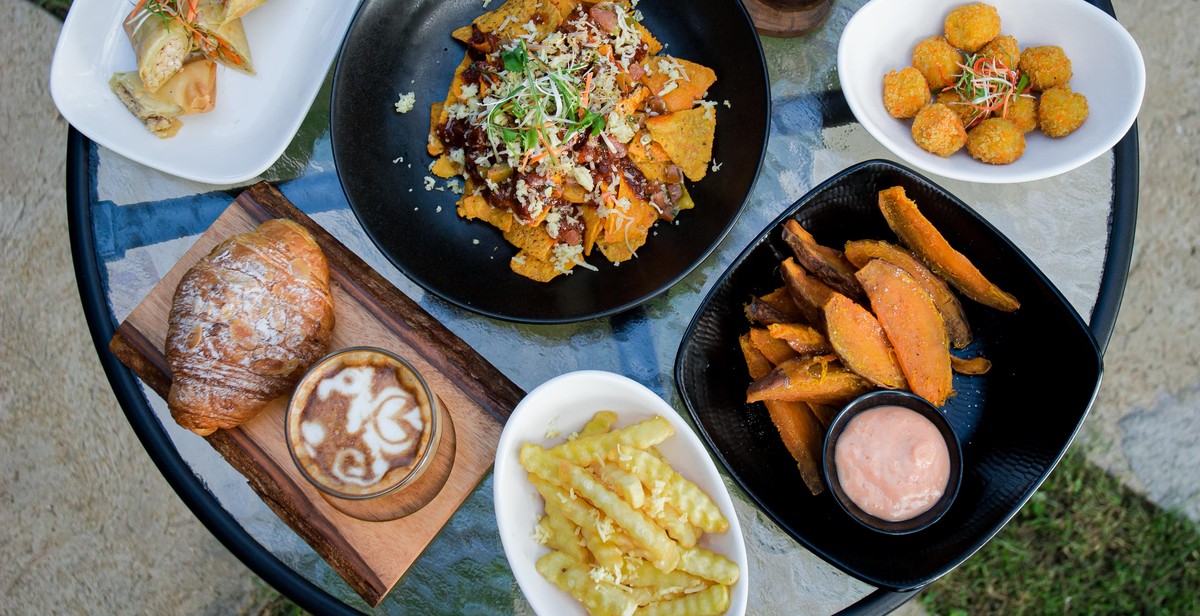How to Create Your Own Beer Recipes: Tips for Formulating Unique and Delicious Brews
Beer is a beverage that has been enjoyed for centuries, and with the rise of craft breweries and homebrewing, it has become more accessible than ever to create your own unique brews. While there are plenty of great beers on the market, there’s something special about brewing your own beer and experimenting with different flavors and ingredients.
Why Create Your Own Beer Recipes?
There are many reasons why you might want to create your own beer recipes. For one, it allows you to tailor your beer to your own tastes and preferences. You can experiment with different hops, malts, and yeast strains to create a beer that is truly unique and perfectly suited to your palate. Additionally, brewing your own beer can be a fun and rewarding hobby that allows you to connect with other beer enthusiasts and learn more about the brewing process.
Whether you’re a seasoned homebrewer or just getting started, this article will provide you with some helpful tips and tricks for formulating your own beer recipes. From selecting the right ingredients to understanding the brewing process, we’ll help you create delicious and unique beers that you can be proud to share with friends and family.

Understanding Beer Ingredients
Beer is a complex beverage made up of four basic ingredients: malt, hops, yeast, and water. Each ingredient plays a crucial role in the flavor, aroma, and appearance of the final product.
Malt
Malt is the backbone of beer. It provides the fermentable sugars that yeast consumes to produce alcohol. Malt is created by sprouting and kilning cereal grains, typically barley. The level of kilning determines the color and flavor of the malt. Lightly kilned malts, such as Pilsner malt, produce a pale, crisp beer. Darkly kilned malts, such as roasted barley, contribute a roasted, coffee-like flavor and a dark color to the beer.
Hops
Hops are the spice of beer. They provide bitterness to balance the sweetness of the malt and contribute floral, citrus, and herbal aromas and flavors. Hops are the cone-like flowers of the hop plant. They are added to the beer during the boiling process and sometimes during fermentation. The amount and timing of the hop additions determines the bitterness and aroma of the beer.
Yeast
Yeast is the magic ingredient of beer. It consumes the fermentable sugars in the malt and produces alcohol and carbon dioxide. Yeast also contributes unique flavors and aromas to the beer. There are two main types of yeast used in beer brewing: ale yeast and lager yeast. Ale yeast ferments at warmer temperatures and produces fruity and spicy flavors and aromas. Lager yeast ferments at cooler temperatures and produces clean and crisp flavors and aromas.
Water
Water is the unsung hero of beer. It makes up the majority of the beer and affects the flavor and character of the final product. The mineral content and pH of the water can influence the bitterness, aroma, and clarity of the beer. Different styles of beer require different types of water. For example, Pilsner beer requires soft water with low mineral content, while Irish stout requires hard water with high mineral content.
Conclusion:
Understanding the role of each ingredient in beer is essential to creating unique and delicious brews. Experiment with different types of malt, hops, yeast, and water to create your own signature beer recipe.

Recipe Formulation
Choosing Your Beer Style
Before you start formulating your beer recipe, you need to decide on the style of beer you want to create. There are various beer styles to choose from, including ales, lagers, stouts, porters, and more. Each style has its unique flavor profile and brewing techniques, so it’s essential to research and understand the characteristics of each style before choosing one.
Selecting Grains and Malts
The next step is to select the grains and malts that will form the base of your beer. The type of grain you choose will significantly impact the flavor and color of your beer. Typically, beer recipes use barley as the primary grain, but you can also experiment with other grains like wheat, rye, and oats. You can also choose from a variety of malts, including pale malt, Munich malt, and caramel malt, to add complexity to your beer.
Picking the Right Hops
Hops are an essential ingredient in beer, providing bitterness, aroma, and flavor. There are many different varieties of hops available, each with its unique characteristics. When selecting hops for your recipe, consider the alpha acid content, flavor profile, and aroma. You can also experiment with different hop additions, like dry hopping or hop bursting, to add more complexity to your beer.
Finding the Perfect Yeast Strain
Yeast is responsible for converting the sugars in your beer into alcohol and carbon dioxide, creating the fizz and flavor of your beer. There are many different strains of yeast available, each with its unique flavor and aroma characteristics. When selecting a yeast strain, consider the style of beer you’re brewing, the desired flavor profile, and the fermentation temperature.
Adding Flavor and Character
Finally, you can add additional flavors and character to your beer by including adjuncts like fruit, spices, or oak chips. These ingredients can add complexity and unique flavors to your beer, but it’s important to use them sparingly to avoid overpowering the other flavors in your recipe.
| Step | Action |
|---|---|
| 1 | Choose your beer style |
| 2 | Select grains and malts |
| 3 | Pick the right hops |
| 4 | Find the perfect yeast strain |
| 5 | Add flavor and character |

Brewing and Fermenting
Brewing and fermenting are the two key processes that turn your ingredients into a delicious beer. Here are some tips for each step:
Equipment and Setup
Before you start brewing, make sure you have all the necessary equipment. This includes a brew kettle, fermenter, airlock, thermometer, hydrometer, and more. You’ll also need to set up your brewing area in a clean, well-ventilated space.
- Clean and sanitize all your equipment before use.
- Measure and crush your grains.
- Heat your water to the desired temperature.
- Add your grains and stir to create a mash.
Mash and Boil
The mash and boil are where you’ll extract the flavor and color from your grains. Here’s how to do it:
- Mash your grains for 60-90 minutes to extract the sugars.
- Boil your wort for 60-90 minutes, adding hops at different intervals for flavor and bitterness.
- Cool your wort to the desired fermentation temperature.
Pro tip:
Use a chiller to quickly cool your wort and avoid contamination.
Fermentation and Conditioning
The fermentation process is where the yeast converts the sugars in your wort into alcohol. Here’s how to do it:
- Add your yeast to the cooled wort and seal the fermenter with an airlock.
- Let your beer ferment for 1-2 weeks.
- Transfer your beer to a secondary fermenter for conditioning (optional).
- Let your beer condition for 1-2 weeks.
Pro tip:
Use a hydrometer to measure the specific gravity of your beer before and after fermentation. This will help you determine the alcohol content and ensure that fermentation is complete.
| Final Thoughts |
|---|
| Brewing and fermenting your own beer can be a fun and rewarding experience. By following these tips, you can create unique and delicious brews that are sure to impress your friends and family. |

Tasting and Adjusting Your Beer
After brewing your beer, it’s time to taste and evaluate it. This is an important step in the beer-making process as it allows you to identify any flaws or areas that need improvement in your recipe. Here are some tips for evaluating and adjusting your beer:
Evaluating Your Beer
When evaluating your beer, start by pouring it into a glass and examining its appearance. Look for clarity, color, and head retention. Next, give it a sniff and take note of its aroma. Finally, take a sip and assess its taste, mouthfeel, and finish.
If you’re new to brewing, it can be challenging to identify specific flavors and aromas in your beer. Consider using a beer flavor wheel or seeking feedback from other brewers to help you identify and describe the characteristics of your beer.
Making Adjustments
Based on your evaluation, you may need to make adjustments to your recipe to improve the flavor, aroma, or mouthfeel of your beer. Here are some common adjustments you can make:
- Hops: If your beer is too bitter, reduce the amount of hops or adjust the timing of hop additions. If it’s not bitter enough, increase the hop quantity or add hops earlier in the brewing process.
- Malt: To adjust the sweetness or body of your beer, you can add or reduce the amount of malt used. Alternatively, you can experiment with different types of malt to achieve the desired flavor profile.
- Yeast: The yeast strain used can significantly impact the flavor and aroma of your beer. Consider experimenting with different strains to achieve the desired characteristics.
- Water: The mineral content of your water can affect the flavor of your beer. Consider using a water report to adjust the mineral content or experiment with different sources of water.
Keep in mind that making adjustments to your recipe can be a trial-and-error process. It’s essential to keep detailed notes and record the changes you make to your recipe so that you can replicate or adjust your beer in the future.
| Adjustment | Effect |
|---|---|
| Reducing hops | Less bitter beer |
| Increasing hops | More bitter beer |
| Reducing malt | Less sweet, less body |
| Increasing malt | More sweet, more body |
| Using different yeast | Altered flavor and aroma |
| Adjusting water minerals | Altered flavor and aroma |
By following these evaluation and adjustment tips, you can refine your beer recipe and create unique and delicious brews that you can enjoy with friends and family.

Conclusion
Creating your own beer recipes can be a fun and rewarding experience for any homebrewer. By following the tips and guidelines in this article, you can formulate unique and delicious brews that will impress your friends and family.
Remember to start with a solid understanding of the ingredients and their characteristics, experiment with different combinations and ratios, and keep detailed notes of your brewing process and results. This will help you refine your recipes and make adjustments for future batches.
Don’t be afraid to think outside the box and try new things. Some of the best beer recipes have been created by taking risks and pushing boundaries. And who knows, you may just come up with the next big thing in craft beer!
Lastly, enjoy the process and have fun with it. Homebrewing is a hobby that brings people together and fosters a sense of community. So grab a friend or two, crack open a cold one, and start brewing!
Key Takeaways
- Creating your own beer recipes requires a solid understanding of ingredients and their characteristics.
- Experimentation is key to formulating unique and delicious brews.
- Detailed notes and adjustments will help refine your recipes.
- Don’t be afraid to take risks and try new things.
- Enjoy the process and have fun with it.
Thank you for reading this article on how to create your own beer recipes. We hope you found it informative and helpful in your brewing endeavors.
